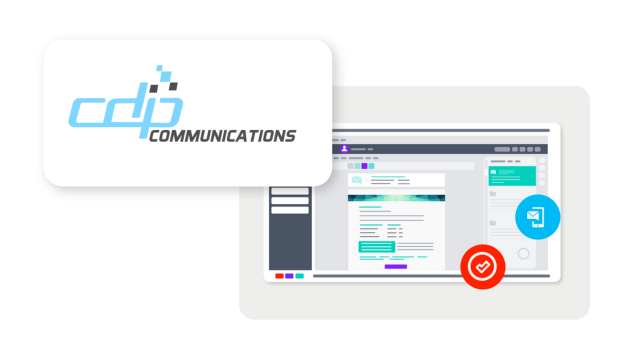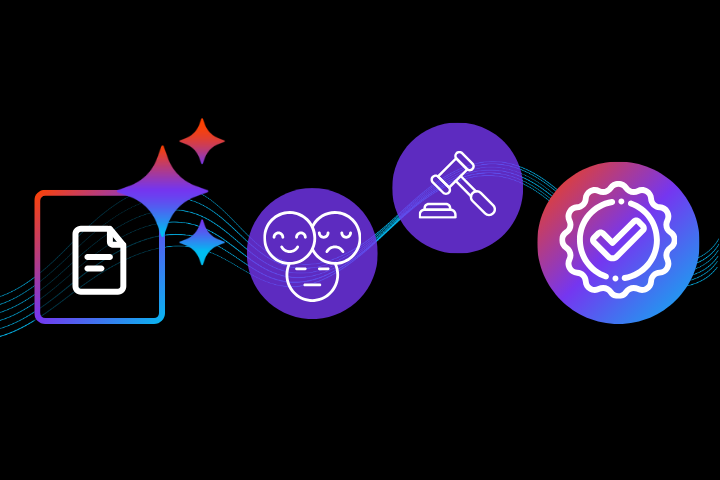
To most communication professionals, the word “how” can often evoke an unusual shudder.
Every day, these individuals are tasked with keeping your customer communications up to date, building new ones for flagship projects, and keeping your executives out of the headlines by making sure everything remains accurate across all channels.
For each of those tasks, funding is requested, and a timeline is given. It’s here where that nervous tick originates. Regardless of how streamlined the timeline or how pared back the budgetary requirement is, the response is invariably the same: “HOW much?” “HOW long?” ...and then the almost mandatory, final kick in the pants – “HOW could it be THIS difficult?”
In this single, ever-repeated moment, the enormity of the responsibilities placed on the head of the hardworking communication professional is lost and replaced by outrage and shock that a simple business request could require so much effort. In turn, the communication professional’s response is also almost guaranteed. There’s a very quiet sigh, followed by the jaw being firmly set in place, and then “the explanation” begins. It’s the same explanation that has been used many times before, and it follows the same path every time.
"The explanation"
"The crux of the problem isn’t the request being made—it’s the complexity of the different IT products that need to be navigated in order to make any change at all. Communication systems have grown organically over the last two decades, as new channels have come online. Our good old-fashioned output management system that churned out printed correspondence for decades couldn’t cut it when emails arrived, so a separate solution was sought out. Then SMS became a big thing, and another product was needed. Smartphone push notifications were another thing altogether, and solution four was bought.
That might have been enough, except that annoying department on the 5th floor insisted on using the marketing email solution instead of our CCM platform’s email capability, so now we have to make sure both get updated every time. Then, when that major regulation changed a few years ago, we found out quite late that the current print solution couldn’t do PDFs, so we ended up having to buy another product for those. Oh, and when we bought that subsidiary last November, they had a completely different set of products, and nobody paid for us to migrate them across. Now, we’ve got to make the same change all over the place whenever you need anything to happen."
An irrelevant network of solutions
The main theme throughout this all-too-common explanation is system complexity. With so many channel-specific systems added to the communications tech stack over the years—each managed by a different team, with different skill sets, simply getting the status quo communications out the door on time and accurately is a challenge. When even the most minor change is needed to a communication template, or the content tied to a template, the change must be made by a variety of different channel teams, across a network of disparate systems that form the communications infrastructure.
With so much time and resources involved, budgets often can’t support regular communication updates, as even the smallest request must be treated as a wide-scale project encompassing many teams, processes, and systems. And the larger the organization, the more complex the communications infrastructure. Mature, nationwide businesses that have acquired other companies over time can often have 10 or more communication solutions running at once, so even a one-line change requires days or weeks of effort after a lengthy delay waiting on resources to be lined up.
Changing paths – solving the CCM problem
Regardless of the validity of everything said in “the explanation,” the reality remains: customers’ needs continue to change, and communications will continue to be a bottleneck unless the problem is solved.
To do this, the technology needs to be unified under a single, modern communications platform that:
- Covers all of your communication needs across your channels, without the need to switch to additional providers
- Handles all channels the same way, so multiple, channel-specific skill sets aren’t required
- Doesn’t require large amounts of time or resources dedicated to managing and upgrading it
- Can be delivered incrementally by your own team, so the first project down the road doesn’t have to pay for the whole bus (or fill it with expensive, technically trained passengers)
- Helps you quickly migrate your current mess into a more streamlined future state
- Is hosted and managed by an organization that will support you through constant innovation, ensuring you meet customers’ needs today and tomorrow
Without this communications platform simplification, the budgetary owner will always be left with the same result – utter disbelief at finding themselves in this situation, extreme frustration at being blocked by such a foundational component of any project, and a need to pay for the costly change through gritted teeth. And for the communications professional, that involuntary tremor whenever the word “how” is used will only worsen.
To further explore how you can simplify customer communications change management, watch our on-demand webinar: Communicating Doesn't Have to be Complex.






